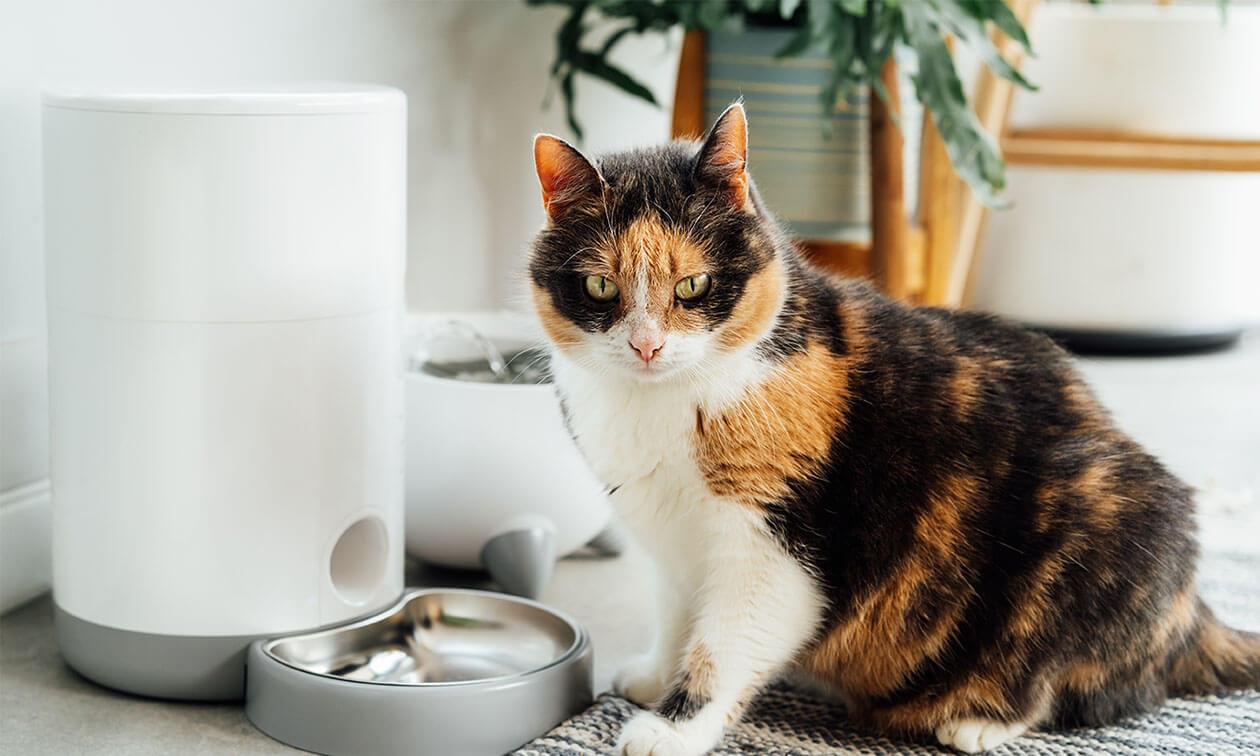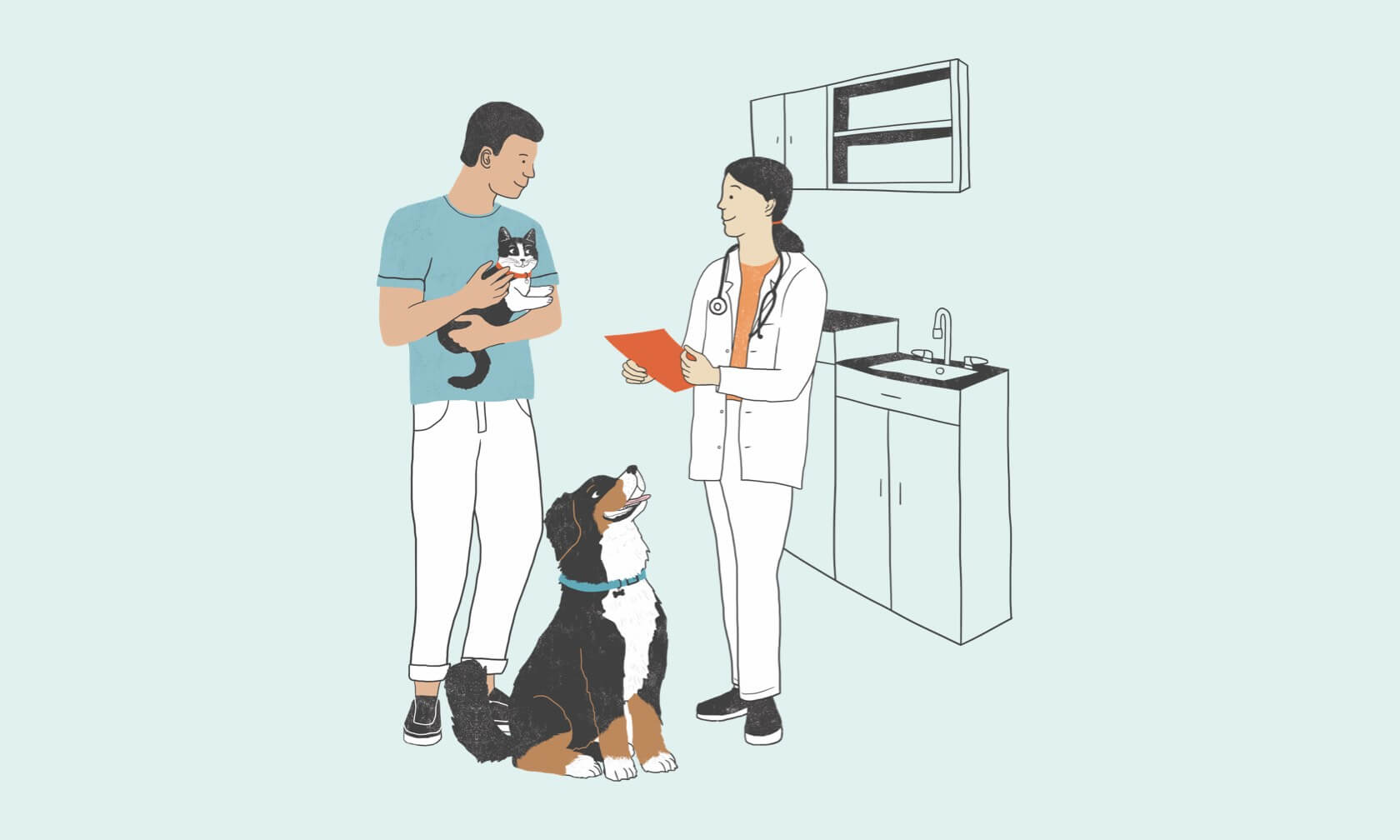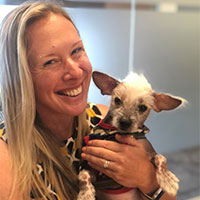We all know how important it is to make sure our pets have plenty of water. That’s why we often get the biggest bowl we can find and top it off with fresh water anytime it runs low, but how often are you actually dumping all the water and cleaning that bowl?
Pet bowls have been studied and found to be the fourth germiest place in the home. Only about 12% of people wash their pet’s bowl daily, and 18% wash only every three months, if at all.1
How Does Your Pet’s Water Bowl Get So Dirty?
Every time your pet takes a lap of water, they deposit microbes from their mouth into the bowl. If your pet plays in the water bowl with their paws, that can deposit dirt and fecal matter, which can contain bacteria and parasites. Mold and mildew can grow in bowls.
Water bowls kept outdoors can have even more contamination, such as dirt, allergens, bugs, and possibly urine and poop from other animals.
If bowls are not routinely cleaned, these microbes can flourish, causing your pet to get sick. If you clean your pets’ bowls with your own dishes, you increase your own risk of illness.
The Dangers of Biofilm in Your Pet’s Water
Biofilm (the slimy film in your pet’s water dish) is made up of colonies of hazardous microorganisms that stick to surfaces. The bacterium within this biofilm is up to 1,000 times more resistant to antibiotics and disinfectants than other bacteria2. The longer between cleanings, the harder it is to remove.
Its presence is a threat to your pet’s health and yours. This is especially true for immunocompromised pets or people.
Dehydration
Pets will avoid drinking water with biofilm, putting them at risk of dehydration. Dehydration is serious for any pet, especially those with underlying medical issues such as kidney disease.
Bad Breath and Medical Issues
Dirty water, even before biofilm forms, can worsen your pet’s bad breath and lead to periodontal disease.
Nutrient absorption across the intestinal wall can be prevented by biofilm. A lack of essential nutrients over time can lead to serious medical issues.
Benefits of Keeping Your Dog and Cat’s Bowls Clean
In addition to avoiding the dangers of biofilm, routinely cleaning your pet’s water bowl helps with overall health.
You can more easily catch changes in your pet’s drinking habits if you’re cleaning and refilling their bowl daily. This means earlier detection of potential health issues.
If the bowl is suddenly always full because your pet stopped drinking, it can clue you into health and behavioral issues. There could be a new stressor causing problems for your pet. The location of the water bowl may suddenly feel less safe.
A clean bowl also encourages your pet to drink more, preventing dehydration.
How To Clean Your Dog or Cat’s Bowl
It takes more than a rinse. Ideally, your pet’s bowl should be cleaned daily, with a deeper cleaning weekly.
If possible:
- Designate specific sponges, towels, and cleaning brushes for pet dishes or disinfect cleaning tools before using on other dishes and surfaces.
- Wash pet dishes separately from household dishes and utensils.
- Avoid cleaning bowls in places where human food is prepped.
For Daily Cleaning
Wash the bowl with dish soap and hot water. Rinse well. Then, it can be refilled for your pet.
For Weekly Cleaning
Soak the bowl in hot water and dish soap for 10 to 15 minutes and then rinse thoroughly with warm water.
If the bowl has a thick biofilm, scrub it using a paste of equal parts baking soda and water. Alternatively, place dishwasher-safe bowls on the top rack and wash them on a high-heat cycle.
If you’re immunocompromised, it’s best not to wash your pet’s dishes with your dishes, even in the dishwasher.
For More Thorough Disinfection
Soak the bowls for 10 minutes in a dilute bleach solution containing ½ cup of regular bleach with a gallon of water. After soaking, thoroughly rinse the bowls in warm water to remove all the bleach and dry completely.
Alternatively, you can soak the bowls for 15 minutes in a white vinegar solution containing ½ cup of distilled vinegar in two cups of water. You can adjust the ratio based on how much soaking liquid you need. DO NOT mix bleach and vinegar. rinse the bowl thoroughly in warm water and completely dry it.
There are also pet-safe, natural disinfectants on the market that can be used on food and water bowls. Check the packaging to ensure they’re safe to use in this way before trying them.
Other Simple Ways to Keep Your Pet’s Bowls Clean
In addition to daily cleaning and weekly disinfecting, these tips will help keep your pet bowls clean.
- Stainless steel or ceramic bowls limit the formation of biofilm, are easier to clean, and most are dishwasher safe.
- Routinely inspect bowls to be sure there are no cracks or damage.
- Prevent damage to the bowls by avoiding scouring pads or abrasive cleaners.
- Have multiple bowls on hand for days you don’t want to wash dirty bowls.
- Establish a bowl-cleaning routine.
- Use filtered water to decrease the development of biofilm.
- Only leave water bowls outside overnight if your pet is outside.
- Do not leave bowls in the sun.
- Do not place bowls near bird or squirrel feeders. While your dog or cat’s water bowls are more likely to develop biofilm or impact their hydration, cleaning their food bowl is also ideal. The same cleaning techniques apply.
ZPC-04456
- Luisana, E., Saker, K., Jaykus, A., & Getty, C. (2022). Survey evaluation of dog owners’ feeding practices and dog bowls’ hygiene assessment in domestic settings. PLOS ONE, 17(4), e0259478. https://doi.org/10.1371/journal.pone.0259478
- Biofilms and How They Affect Your Dog or Cat. Animal Wellness. https://animalwellnessmagazine.com/biofilms-effects-on-dogs-and-cats/. Accessed July 22, 2024.



